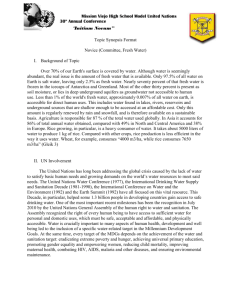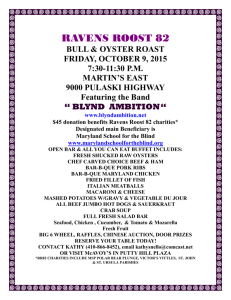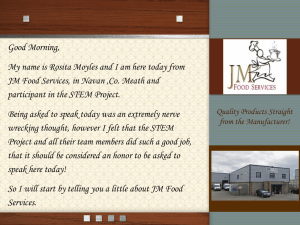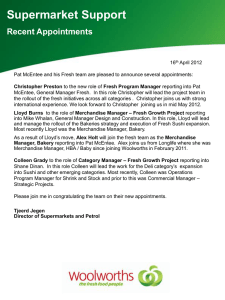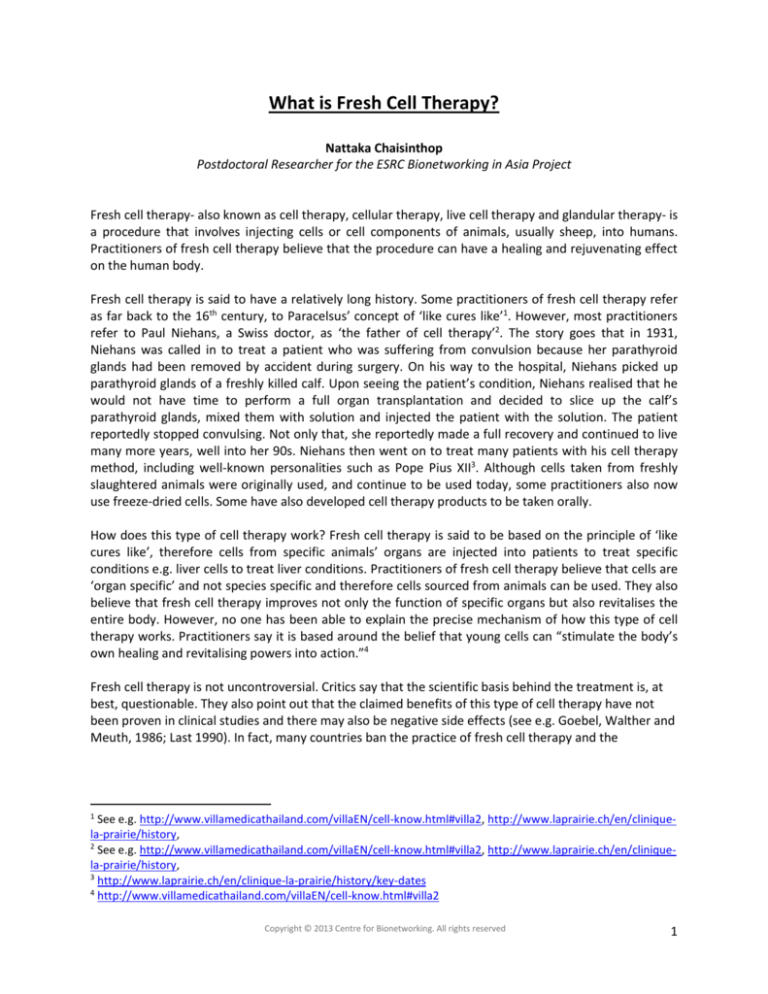
What is Fresh Cell Therapy?
Nattaka Chaisinthop
Postdoctoral Researcher for the ESRC Bionetworking in Asia Project
Fresh cell therapy- also known as cell therapy, cellular therapy, live cell therapy and glandular therapy- is
a procedure that involves injecting cells or cell components of animals, usually sheep, into humans.
Practitioners of fresh cell therapy believe that the procedure can have a healing and rejuvenating effect
on the human body.
Fresh cell therapy is said to have a relatively long history. Some practitioners of fresh cell therapy refer
as far back to the 16th century, to Paracelsus’ concept of ‘like cures like’1. However, most practitioners
refer to Paul Niehans, a Swiss doctor, as ‘the father of cell therapy’2. The story goes that in 1931,
Niehans was called in to treat a patient who was suffering from convulsion because her parathyroid
glands had been removed by accident during surgery. On his way to the hospital, Niehans picked up
parathyroid glands of a freshly killed calf. Upon seeing the patient’s condition, Niehans realised that he
would not have time to perform a full organ transplantation and decided to slice up the calf’s
parathyroid glands, mixed them with solution and injected the patient with the solution. The patient
reportedly stopped convulsing. Not only that, she reportedly made a full recovery and continued to live
many more years, well into her 90s. Niehans then went on to treat many patients with his cell therapy
method, including well-known personalities such as Pope Pius XII3. Although cells taken from freshly
slaughtered animals were originally used, and continue to be used today, some practitioners also now
use freeze-dried cells. Some have also developed cell therapy products to be taken orally.
How does this type of cell therapy work? Fresh cell therapy is said to be based on the principle of ‘like
cures like’, therefore cells from specific animals’ organs are injected into patients to treat specific
conditions e.g. liver cells to treat liver conditions. Practitioners of fresh cell therapy believe that cells are
‘organ specific’ and not species specific and therefore cells sourced from animals can be used. They also
believe that fresh cell therapy improves not only the function of specific organs but also revitalises the
entire body. However, no one has been able to explain the precise mechanism of how this type of cell
therapy works. Practitioners say it is based around the belief that young cells can “stimulate the body’s
own healing and revitalising powers into action.”4
Fresh cell therapy is not uncontroversial. Critics say that the scientific basis behind the treatment is, at
best, questionable. They also point out that the claimed benefits of this type of cell therapy have not
been proven in clinical studies and there may also be negative side effects (see e.g. Goebel, Walther and
Meuth, 1986; Last 1990). In fact, many countries ban the practice of fresh cell therapy and the
1
See e.g. http://www.villamedicathailand.com/villaEN/cell-know.html#villa2, http://www.laprairie.ch/en/cliniquela-prairie/history,
2
See e.g. http://www.villamedicathailand.com/villaEN/cell-know.html#villa2, http://www.laprairie.ch/en/cliniquela-prairie/history,
3
http://www.laprairie.ch/en/clinique-la-prairie/history/key-dates
4
http://www.villamedicathailand.com/villaEN/cell-know.html#villa2
Copyright © 2013 Centre for Bionetworking. All rights reserved
1
importation of fresh cell therapy products intended for injections. Professional bodies, such as the
American Cancer Society, also advise people not to seek the treatment5.
Fresh cell therapy is, however, permitted in some countries, most notably in Switzerland and Germany.
In 1997, the German Ministry of Health did ban fresh cell therapy, citing negative side effects, unproven
benefits and a fear that a sheep form of BSE might develop6. However, in 2000, the Constitutional Court
ruled that the 1997 ban was void, not because the scientific basis behind the 1997 decision had
changed, but because the ban violated professional freedom of medical practitioners7. Under Article 74,
medical practitioners are entitled to use such drugs in their own clinics, though they are not allowed to
produce and circulate cell therapy products outside of their own clinics. At the moment, fresh cell
therapy clinics are regulated under provincial governments in Germany. Despite the controversy and the
steep price tag- a four-day stay at one German clinic costs 15,000 Euros- these European clinics have
become popular medical tourist destinations for some of the rich and famous in Asia. Indeed, many
celebrities and politicians in Thailand and the Philippines, for example, have spoken to the media about
fresh cell therapy and its anti-aging and rejuvenating effects8.
Another controversy involves the issue of whether this type of cell therapy is stem cell therapy. Some
practitioners of fresh cell therapy claim that fresh cell therapy is ‘the mother of stem cell therapy’9 and
regularly make references to stem cell when discussing their practice. However, scientists working in the
field of regenerative medicine deny that fresh cell therapy is stem cell therapy. They do not believe that
the solutions of injected into patients contain any viable stem cells at all. Critics accuse practitioners of
fresh cell therapy who link their practice to stem cells of exploiting the public interest in stem cell
science to increase the appeal and credibility of their own fresh cell therapy practice.
References
Goebel, H H, Walther, G & Meuth, M. (1986). Fresh cell therapy followed by fatal coma. Journal of
Neurology 233 (4): 242-7.
Last, P M. (1990). Cell therapy: A cruel and dangerous deception. A drama in three acts. Journal of
Paediatrics and Child Health 26 (4): 197-9.
5
http://www.cancer.org/treatment/treatmentsandsideeffects/complementaryandalternativemedicine/pharmacol
ogicalandbiologicaltreatment/cell-therapy
6
http://www.gesetze-im-internet.de/frischzv/BJNR043200997.html
7
http://www.bundesverfassungsgericht.de/en/press/bvg18-00.html
8
E.g. http://www.philstar.com/newsmakers/2013/05/02/937204/secret-no-more,
http://www.nationmultimedia.com/national/Wealthy-75-yr-old-seeks-fountain-of-youth-30192789.html
9
http://scienceblogs.com/insolence/2012/07/24/another-cell-therapy-quackery-for-autism-rears-its-ugly-head/
Copyright © 2013 Centre for Bionetworking. All rights reserved
2


